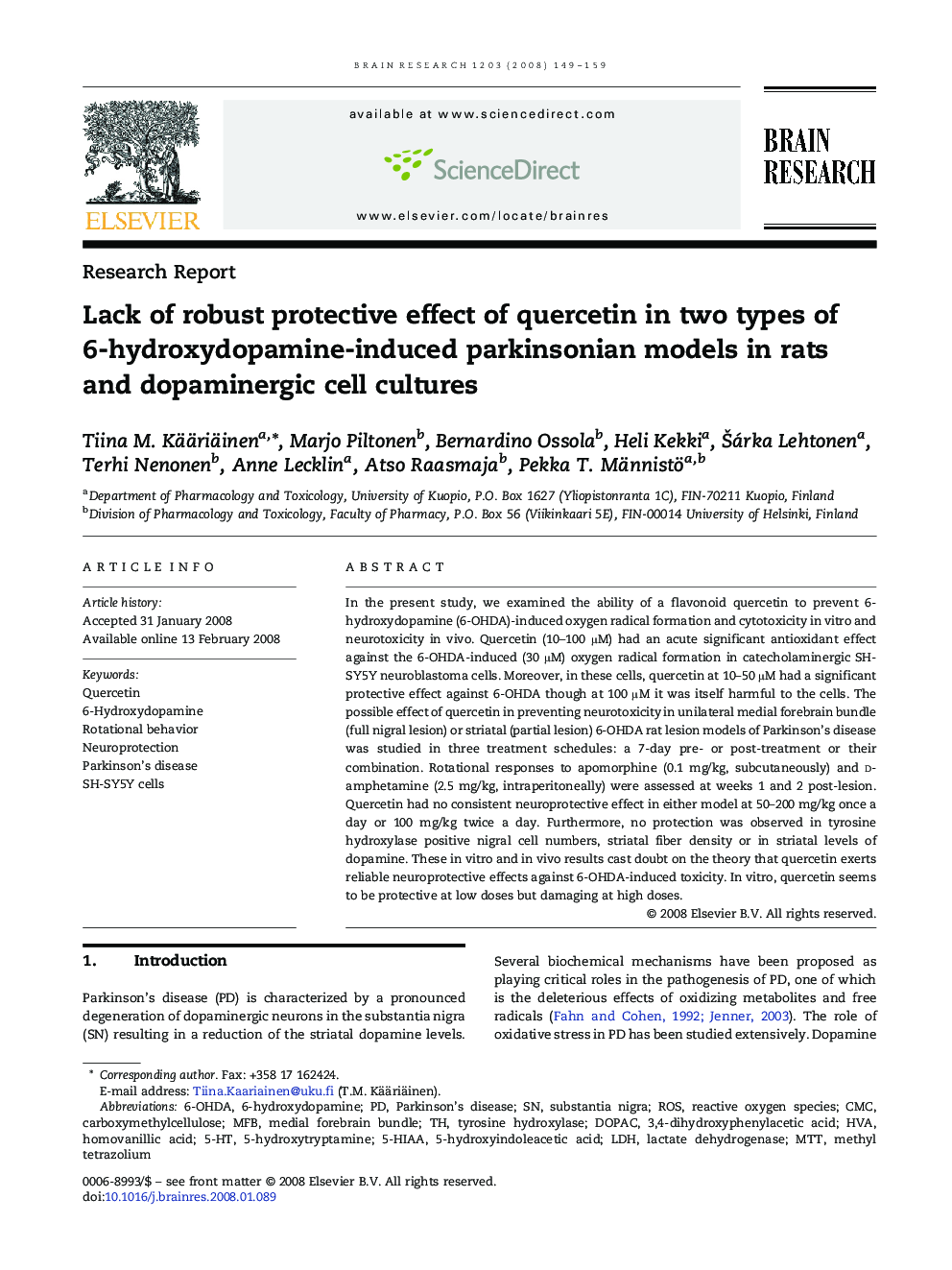| Article ID | Journal | Published Year | Pages | File Type |
|---|---|---|---|---|
| 4329963 | Brain Research | 2008 | 11 Pages |
In the present study, we examined the ability of a flavonoid quercetin to prevent 6-hydroxydopamine (6-OHDA)-induced oxygen radical formation and cytotoxicity in vitro and neurotoxicity in vivo. Quercetin (10–100 μM) had an acute significant antioxidant effect against the 6-OHDA-induced (30 μM) oxygen radical formation in catecholaminergic SH-SY5Y neuroblastoma cells. Moreover, in these cells, quercetin at 10–50 μM had a significant protective effect against 6-OHDA though at 100 μM it was itself harmful to the cells. The possible effect of quercetin in preventing neurotoxicity in unilateral medial forebrain bundle (full nigral lesion) or striatal (partial lesion) 6-OHDA rat lesion models of Parkinson's disease was studied in three treatment schedules: a 7-day pre- or post-treatment or their combination. Rotational responses to apomorphine (0.1 mg/kg, subcutaneously) and d-amphetamine (2.5 mg/kg, intraperitoneally) were assessed at weeks 1 and 2 post-lesion. Quercetin had no consistent neuroprotective effect in either model at 50–200 mg/kg once a day or 100 mg/kg twice a day. Furthermore, no protection was observed in tyrosine hydroxylase positive nigral cell numbers, striatal fiber density or in striatal levels of dopamine. These in vitro and in vivo results cast doubt on the theory that quercetin exerts reliable neuroprotective effects against 6-OHDA-induced toxicity. In vitro, quercetin seems to be protective at low doses but damaging at high doses.
